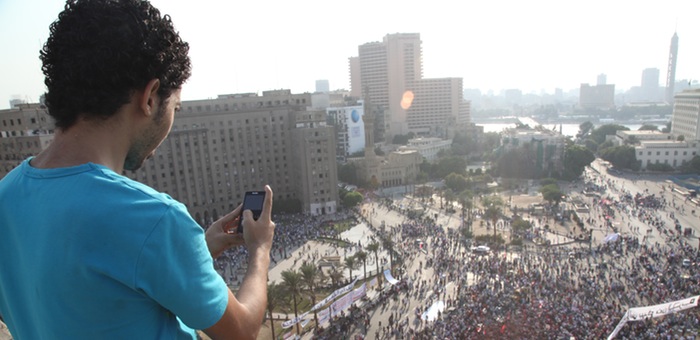Published May, 2014 by WITNESS in Uncategorized
The Ethics of Curating Citizen Video
This is the first in a series about developing guidelines for the ethical use of citizen video in human rights reporting. For the second post, concerning the ethics of publishing a video of sexual assault, click here.
For two years, WITNESS has curated citizen videos on the Human Rights Channel on YouTube, and before YouTube, on The Hub. We do that because it is no longer just trained human rights defenders who are using video to document abuse, but eyewitnesses, soldiers, detainees, humanitarian workers, perpetrators, and others—what some have termed the “Fifth Estate”—whose first-hand footage can provide valuable evidence of human rights abuses.
But the decision to share that footage is not always easy. In some cases, we are unable to verify with absolute certainty when or where a video was filmed. In others, footage exposes vulnerable people, who can be at risk if identified in a certain context. Still yet, we have seen perpetrator-filmed videos that document abuse while revealing the victims, who clearly were not asked for their consent to be on camera. Over the years, several videos have prompted internal and public debate over the ethics of distributing citizen video.
That’s why we applaud the efforts underway by two journalism associations to develop guidelines for ethical reporting in the 21st century, and are lending our voice to the discussion. Simultaneous initiatives by the Society of Professional Journalists to revise its Code of Ethics, and by the Online News Association to create a DIY Ethics Code, present an opportunity to consider how changes in media platforms, technology, and practices have brought about new challenges to consider when striving to make ethical reporting decisions.
While newsrooms and human rights organizations do not necessarily share the same objectives or subscribe to the same ethical standards, the role of the “Fifth Estate” has made an impact on both fields, and we share many of the emerging challenges in determining how to work with citizen reports in a safe, ethical, and effective manner.
Over the next few weeks, we will highlight on the WITNESS blog a few of the ethical conundrums that we have encountered in the course of our work curating human rights video. We hope that these cases can provide SPJ and ONA as well as individual newsrooms and reporters with scenarios to bear in mind when considering how a revised ethics code could address the use of citizen video in reporting.
We also aim to broaden the discussion underway in the journalism industry to other fields utilizing citizen footage, such as advocacy and crisis response work, where traditional professional standards often conflict with the desire to use citizen video effectively to expose abuse. Finally, the series will conclude with the publication of our own revised ethics code that guides our work curating citizen video on the Human Rights Channel.
For now, I’ll leave you with our own Guidelines for Violent or Objectionable Content, which outlines the kind of videos that cause our team to pause before distributing publicly, and invite your comments or questions on it below:
To ensure that WITNESS upholds the basic principles of human dignity, and to help minimize and prevent direct or indirect harm resulting from any footage, audio or imagery, careful consideration will be given on whether to feature content:
- Posing a significant risk to someone’s life or personal safety;
- Representing a direct written or verbal incitement to violence or hate;
- Containing pornographic nudity or sexual imagery;
- Where the subject’s capacity for decision making or ability to give consent may be compromised, such as children (under 18), detainees/prisoners, and people with mental disabilities;
- Featuring graphic violent imagery;
- That is discriminatory or intolerant on the grounds of ethnicity, race, gender, disability, national origin, sexual orientation or religion or is otherwise inappropriate;
- Content that risks re-victimizing the subject of the human rights violation.
This article was written by Madeleine Bair and originally appeared on the WITNESS Blog.
Lead Image: A young man films using a mobile phone from a rooftop looking over Tahrir Square in Cairo, by Ryan Kautz/WITNESS.
This post was originally written for the Human Rights Channel, which is now the WITNESS Media Lab. Follow @WITNESS_Lab on Twitter for analysis and resources on the verification and contextualization of eyewitness video for human rights.

